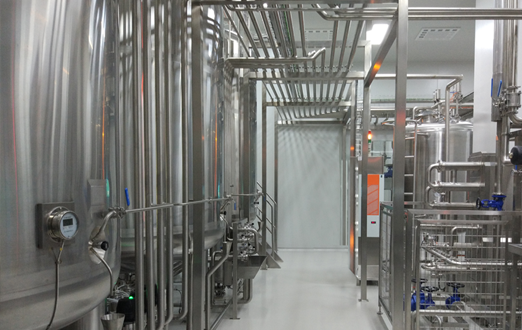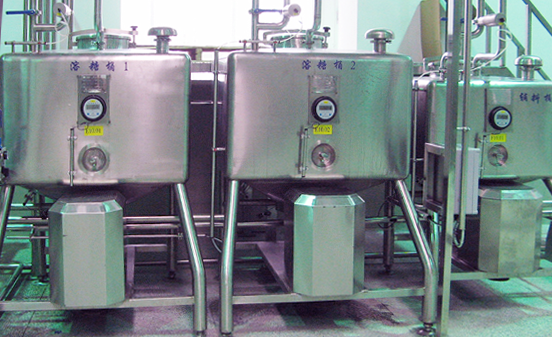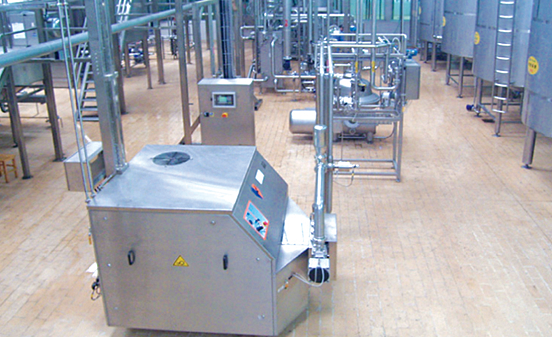

Blending system refers to the equipment combination that the various raw and auxiliary materials and process water are extracted or dissolved by various process units according to the pre-determined process parameters, and then mixed and fixed to obtain semi-finished products; its main modules include hot water unit, saccharose filter sterilizing unit, juice/tea powder reconstitution unit, auxiliary material dissolving unit, tea extracting and filtering unit, powdered milk reconstitution mixing unit, blending constant volume unit, CIP cleaning unit, pipe unit, electrical control and central control units.
The product quality of the blending system is mainly determined by the rigorous design, perfect automatic control system and considerable experience in engineering installation. With its engineering design and installation experience of more than 2,000 large-scale projects, Newamstar has a professional design team and engineering installation team to provide you with professional and high-quality services.

Tea extraction refers to the operation of extracting effective ingredients from tea leaves by soaking in hot water. The purpose of this operation is to efficiently extract the effective ingredients of the plants to maintain the unique color, aroma, and taste of the tea liquor as much as possible and prevent the excessive dissolution of non-effective ingredients in the precipitated liquid of beverage.
The method of fractional extraction will be adopted, in which the first extraction will be performed by low temperature to protect the aroma component of the original solution and to dissolve the small molecule heat sensitive component; the secondary extraction uses high temperature to extract the macromolecular effective taste components in tea. At the same time, however, non-polyphenolic macromolecule compounds also dissolve together, which may cause beverage turbidity and sedimentation, which can be solved by controlling extractive parameters.
After the extraction, the clarification of the tea juice is carried out to remove impurities, gums, and non-polyphenol macromolecular compounds in the tea juice, so as to avoid turbidity and sedimentation during the shelf life of the product. Clarification methods include low-temperature sedimentation (high-speed centrifuge) and membrane separation (ultrafiltration), or a combination of the two methods.

Sugar is one of the main components that make up a fruit juice beverage. The process that sucrose is dissolved in water to make a single syrup is called sugar dissolving operation.
Sugar dissolving system include the following units:
Sugar powder delivery, sugar powder dissolution, syrup sterilization, syrup filtration and cooling, syrup storage and other units. In special cases, the syrup needs to be degassed. A typical thermal melting process shall be done at 85°C for 10 min, and then gradual cooling process will be done to drop the temperature to the operating temperature (below 40°C).

For cloudy juice, it is necessary to break down the fibers and granules by high-pressure homogenization to distribute them evenly and finely so as to improve the physical properties and the mouthfeel of beverage products. A plunger pump is generally used as the homogenizer. The liquid product flows at a very high speed through the narrow gap between the valve seat and the valve core. Under the triple action of the shearing effect, the impact produced by high-velocity jetting, and the cavitation effect caused by the instantaneous pressure drop, the material can be ultra-finely pulverized to form a liquid-solid dispersion.
The homogenization pressure of the juice can be 25-40 MPa, matching the use of the homogenizer of the domestic first-class brand. Degassing is to avoid oxidation, but it will remove volatile aromas at the same time. The solution to this problem is to add an aroma recovery device. Therefore, the two operations of homogenization and degassing should be carried out after proper heating. They are often used in series with UHT, that is, after the UHT preheating section.